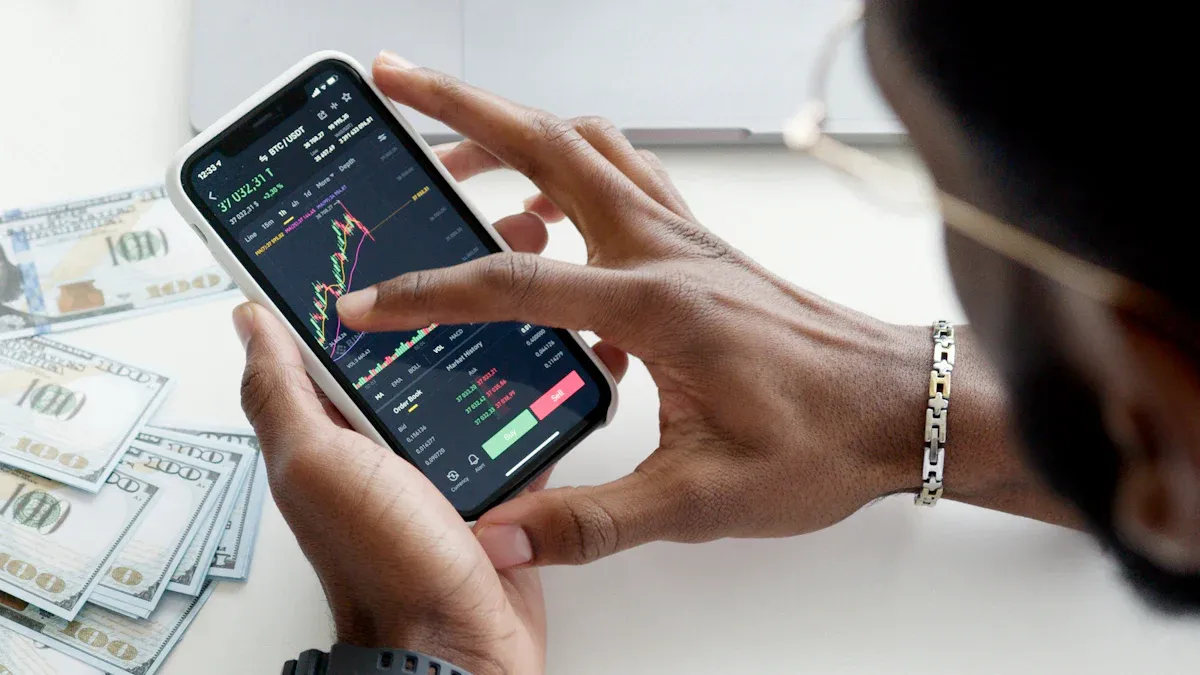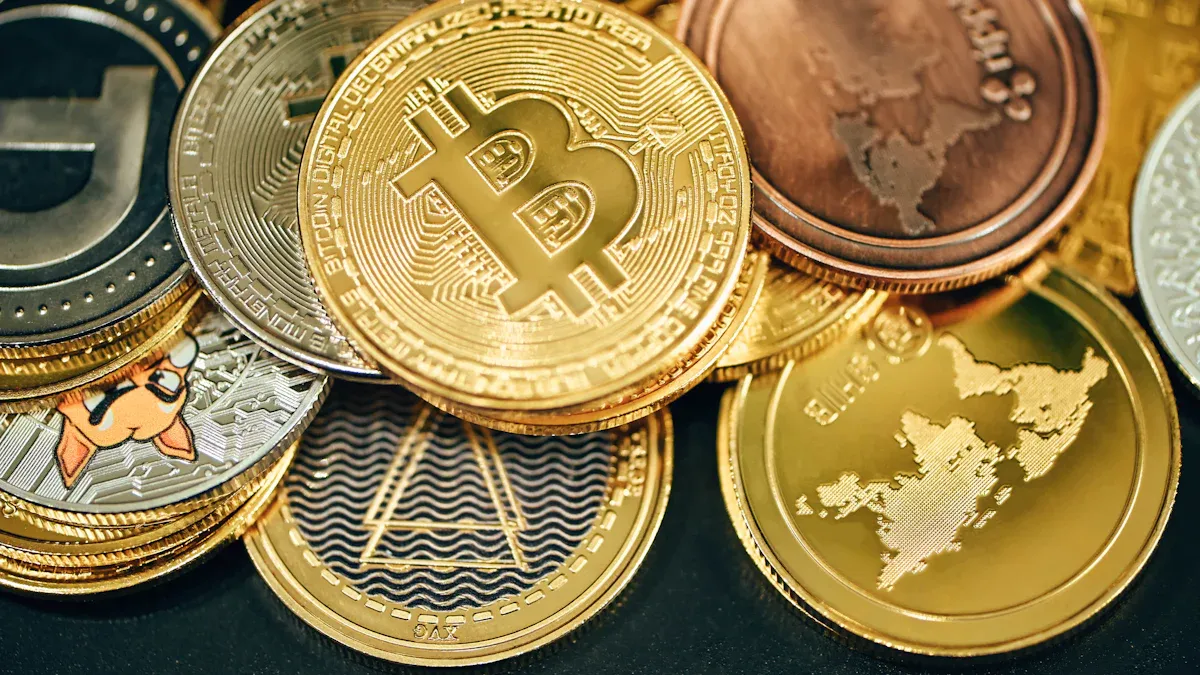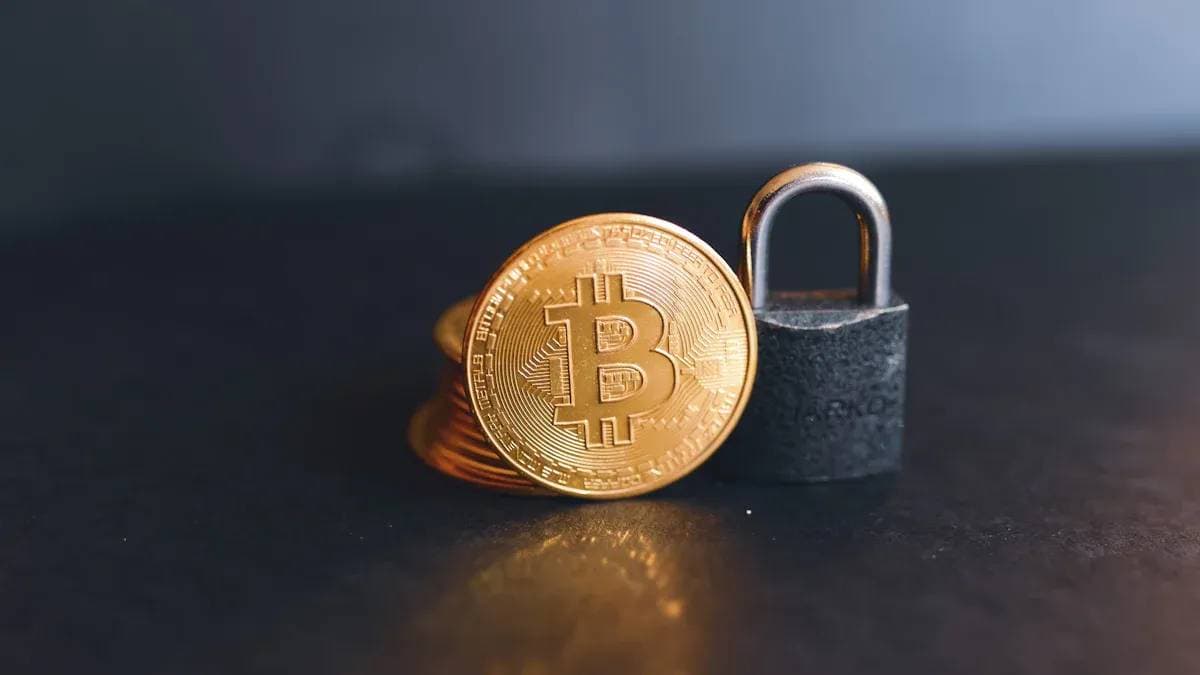- EasyCard
- Trade
- Help
- Announcement
- Academy
- SWIFT Code
- Iban Number
- Referral
- Customer Service
- Blog
- Creator
Say Goodbye to High Fees: Practical Guide to Using USDT for Remitting to Studying Children Abroad

Image Source: pexels
Are you troubled by a $50,000 study abroad remittance?
Traditional bank wire transfers not only take 3 to 5 business days, but also exhaust your annual $50,000 personal foreign exchange purchase quota. Fees, cable charges, and intermediary bank fees add up to a considerable expense.
Now, imagine a disruptive solution: using USDT (digital dollar) for remittance. The total cost may be less than $50, funds can arrive in your child’s digital wallet within 1 hour, and it does not occupy your personal foreign exchange quota. This article will teach you step-by-step how to complete this operation safely and at low cost, dispelling your concerns about “not understanding it or fearing scams.”
Key Takeaways
- USDT remittance is cheaper and faster than traditional bank wire transfers and does not occupy personal foreign exchange quotas.
- Both parents and children need to register accounts on reliable trading platforms and complete identity verification.
- When buying and selling USDT, always choose reputable merchants and avoid noting sensitive words during transfers.
- When transferring USDT, you must select the correct network and conduct a small test transfer first to prevent fund loss.
- Protect digital wallet private keys and seed phrases well, and understand and comply with local laws and tax regulations.
USDT Basics: Advantages and Foundational Knowledge

Image Source: unsplash
Before diving into practical operations, you need to understand some basic knowledge. This will help you use this new tool more confidently.
What Is USDT?
You can simply think of USDT as a “digital dollar.” It is a special digital currency known as a “stablecoin.”
Unlike Bitcoin with its wildly fluctuating price, USDT aims to maintain a 1:1 value peg with the USD. The company issuing USDT, Tether, claims to back every circulating USDT by holding equivalent real-world assets (mainly USD-denominated assets) as reserves. In theory, this means 1 USDT you hold is worth approximately 1 USD. This stability makes it an ideal value transfer tool.
USDT vs. Other Stablecoins (e.g., USDC)
USDT is currently the stablecoin with the largest market share, but it is not the only option. USDC is another mainstream stablecoin issued by an alliance of companies including Circle and Coinbase. The two differ in transparency and regulatory compliance.
Tip: For beginners, understanding the differences helps make safer choices. USDC is generally considered superior in reserve transparency and regulation.
| Feature | USDT (Tether) | USDC (Circle) |
|---|---|---|
| Reserve Assets | Backed by cash, cash equivalents, and other asset combinations. | Primarily backed by cash and short-term U.S. government bonds. |
| Transparency | Regularly publishes reserve reports, but transparency has been questioned. | Monthly public reserve attestation reports by third-party accounting firms. |
| Regulatory Compliance | Complies with laws in operating jurisdictions but has faced legal challenges. | Strictly adheres to U.S. financial regulations, seen as a compliance benchmark. |
Core Advantages of USDT Remittance
Why choose USDT for study abroad remittances? The answer lies in solving several pain points of traditional wire transfers:
- Extremely Low Cost: Comprehensive fees for traditional wire transfers can reach hundreds of USD. Sending USDT via the TRC-20 network (a mainstream transfer channel) typically costs only $1 - $2 per transaction.
- Amazing Speed: Bank wire transfers take 3-5 business days. USDT transfers are unrestricted by bank hours or holidays; on TRC-20, they usually arrive in under 1 minute.
- Bypassing Quota Limits: USDT remittances do not use your annual $50,000 personal foreign exchange quota, providing more flexibility for large funds.
These advantages together form an efficient, economical new remittance solution.
USDT Study Abroad Remittance: Four-Step Practical Guide

Image Source: unsplash
With theoretical knowledge mastered, let’s enter the core practical phase. Please strictly follow the four steps below; each is crucial. This process will guide you and your child to complete the entire remittance safely and efficiently.
Preparation: Accounts and Wallets
Before buying, selling, and transferring, both you and your child need to prepare the necessary tools. This is like both parties needing bank accounts for traditional remittances.
1. Parent: Register a Reliable Trading Platform Account
You need a regulated, reputable cryptocurrency trading platform to purchase USDT with fiat currency (e.g., RMB). Choosing a platform with a mature risk control system is the first step to fund security.
How to Choose? Prioritize platforms with large user bases, high trading volumes, and strong security measures. For example, Binance, OKX, and others have established user asset protection funds to address potential platform security risks.
After registration, you must complete the platform’s identity verification (KYC). This is a standard financial compliance process. It usually includes:
- Submitting Personal Information: Your name, date of birth, residential address, etc.
- Uploading ID Proof: Typically requires clear photos of your ID document.
- Facial Recognition: Complete a simple selfie or video verification as prompted.
Only after KYC completion can you trade fiat currencies.
2. Child: Prepare a Wallet to Receive USDT
Your child needs a digital wallet to receive the USDT you transfer. He/she can choose:
- Use the Same Trading Platform Account: The simplest way. The child registers and completes KYC on the same (or another) mainstream platform. You directly transfer USDT from your account to his/hers.
- Use a Non-Custodial Wallet: A safer, more decentralized option. The child can download a non-custodial wallet app (e.g., Trust Wallet, MetaMask). The “private key” or “seed phrase” of such wallets is fully controlled by the user, meaning absolute asset control.
Security Tip: If using a non-custodial wallet, the child must back up the seed phrase physically (e.g., handwritten on paper) and store it securely. Never screenshot or store online.
Step 1: Safely Buy USDT
With preparations ready, you can start buying USDT. This is usually done on the platform’s C2C (Customer-to-Customer) or P2P (Peer-to-Peer) market. Here, you trade directly with other users, with the platform as an intermediary guarantor.
Screening Reputable Merchants** Is Key:** To avoid fraud or receiving funds from questionable sources, always choose reliable merchants. In the merchant list, focus on these indicators:
- Certified Merchant Badge: Platforms usually certify high-quality merchants (e.g., a yellow “V” badge). Prioritize trading with them.
- High Transaction Volume and Completion Rate: Choose merchants with many total orders (e.g., thousands) and high recent 30-day completion rates (e.g., 99%+).
- Positive User Reviews: Check other buyers’ reviews of the merchant.
Core Trading Rule: When paying the merchant via bank card or Alipay, never include any sensitive words related to USDT, Bitcoin, or cryptocurrency in the transfer memo. Just transfer directly; the platform system will automatically match the order.
Step 2: Transfer USDT to Your Child
The purchased USDT will be stored in your platform’s fund account. Now, you need to transfer it to your child.
- In the trading platform app, find the “Assets” or “Wallet” page and click “Withdraw”.
- Select the coin to withdraw: USDT.
- Choose “Via Blockchain Transfer”.
- Paste the USDT receiving address provided by your child.
- Select the Correct Transfer Network (Crucial!)
- Enter the amount you want to transfer.
- Confirm the information and complete security verification (usually requires SMS and email codes).
⚠️ Network Selection Warning The transfer network must exactly match your child’s receiving address network. Currently, TRC-20 (TRON network) is the most common choice due to extremely low fees (usually ~$1) and fast speed. If you select the wrong network (e.g., sending TRC-20 USDT to an ERC-20 address), your funds will be permanently lost and unrecoverable.
Repeatedly Verify the Address, Conduct a Small Test Transfer: Blockchain transfers are irreversible. Once sent, no one can cancel.
- Cross-Verification: Have your child send the wallet address via two different methods (e.g., WeChat and email); carefully check if both addresses match exactly.
- Check Head and Tail: Since addresses are long, verify the first 4 and last 4 characters.
- Small Test Transfer: Before large transfers, send a small amount (e.g., 10 USDT) to test. After your child confirms receipt, proceed with the large transfer.
Step 3: Child Sells USDT for Local Currency
After your child receives USDT, he/she can sell it locally (e.g., in the U.S. or UK) to exchange for local fiat (e.g., USD, GBP). The operation is the reverse of your purchase.
- The child logs into his/her trading platform account.
- Enters the P2P/C2C market and selects “Sell” USDT.
- Screens buyers. Similarly, choose those with high volume, high completion rates, and good reputation.
- Selects a buyer supporting receipt to his/her local bank account and places the order.
- Waits for the buyer to pay.
- Key Step: The child must log into his/her banking app to visually confirm the money has arrived and the amount is correct.
- After confirming receipt, returns to the platform and clicks “Confirm Receipt and Release USDT”.
This process provides your child a flexible way to complete the final step of this study abroad remittance.
Advanced Option: Withdraw via Compliant Apps
Besides P2P trading, there is a more direct path: using financial apps with licenses, such as BiyaPay. Such apps usually hold MSB (Money Services Business) licenses in the U.S. or Canada, allowing users to directly convert digital currency to USD and withdraw.
Operation Process Roughly as Follows:
- Your child registers an account on a compliant app like BiyaPay.
- You transfer USDT directly from the trading platform to the child’s wallet address in the app.
- The child uses the “Flash Swap” function in the app to convert USDT to USD at the real-time exchange rate.
- Withdraws the USD balance in the app to his/her linked bank account, such as Wise, OCBC, or a local U.S. bank account.
Pros and Cons of This Path:
- Advantages: Simpler process, clearer fund path, may better comply with certain countries/regions’ regulations.
- Disadvantages: Involves certain fees. This usually includes an exchange rate spread (~0.1% - 0.5%) during conversion and fixed withdrawal fees. Though costlier than P2P, it is a worthwhile option for users seeking simpler operations and more standard paths.
Core Risk Prevention and Safety Notes
Technology is neutral; use its benefits and avoid its risks. Although USDT remittance is efficient and convenient, you must clearly recognize and prevent its risks. This section is the lifeline of your fund security; please read carefully and strictly follow.
Transaction Operation Risks: Anti-Scam and Anti-Account Freeze
You may encounter bank account freeze risks in C2C trading. This usually occurs because you received funds from unknown or illegal sources. To minimize this risk, please:
- Choose Top Platforms: Always use large trading platforms with mature risk controls that strictly enforce KYC (Know Your Customer) and AML (Anti-Money Laundering) rules.
- Prefer Certified Merchants: Only trade with platform-certified merchants with high volume and high positive ratings.
- Verify Counterparty Real Name: Before payment, ensure the recipient account’s real name matches the platform’s display.
Banks’ regulation of crypto-related transactions is increasingly strict; cooperating with reputable platforms and merchants is the first line of defense for your account security.
Digital Asset Security: Wallets and Private Keys
Your digital asset security is entirely in your own hands. The core is understanding and protecting “private keys” and “seed phrases.”
Think of private keys and seed phrases as the keys to your bank safe.
| Feature | Private Key | Seed Phrase |
|---|---|---|
| Definition | A string of encrypted characters used to sign transactions | 12-24 words used to recover the entire wallet |
| Function | Controls assets in a single account | Recovers all accounts and private keys in the wallet |
| Risk | Leak leads to theft of a single account | Leak leads to theft of all wallet assets |
Security Foundation:Physical Backup, Absolutely Offline Your child’s seed phrase is the only way to recover the wallet. It must be handwritten on paper and stored in a fireproof, waterproof safe. Never screenshot, photograph, or store on any connected device. Beware of any phishing sites or fake apps requesting private keys or seed phrases.
Legal and Policy Risk Warnings
Using cryptocurrency for cross-border remittances requires understanding related legal and policy risks.
- In Mainland China:Officials explicitly prohibit all cryptocurrency-related trading activities. Although personal holding is not explicitly banned, any buying/selling is in a legal gray area.
- In Major Study Abroad Countries:
- United States:The IRS treats cryptocurrency as “property” rather than currency. This means gains or losses from selling USDT for USD must be reported as capital gains tax.
- UK, Canada, Australia: These countries have corresponding regulations and tax rules for cryptocurrency. Your child needs to understand and comply with local laws.
In summary, while this method solves traditional wire transfer pain points, it should not be seen as the only fund channel. When using this innovative study abroad remittance method, ensure fund sources and uses are fully legal and compliant, and prepare for potential legal and tax issues.
USDT remittance solves traditional wire transfer pain points in cost and efficiency. Please remember the core three-step process:
- Safely buy
- Verify transfer
- Sell after confirming receipt
Technology is neutral; use its benefits and avoid its risks. As long as you follow this guide’s advice and operate cautiously, you can confidently enjoy the convenience of digital currency.
We strongly recommend first completing the full process with a small amount (e.g., 100 USDT). After familiarizing yourself, proceed with larger amounts. Feel free to share experiences in the comments.
FAQ
With so many trading platforms, how do I choose?
You should prioritize global top trading platforms. Evaluation criteria mainly include three points:
- User Scale and Trading Volume: Choose platforms with many users and active trading.
- Security Measures: Check if the platform has a user asset protection fund.
- Compliance and Regulation: See if the platform holds compliant licenses in major countries.
What if my bank account is frozen?
Bank account freezes are a risk to watch in C2C trading.
To minimize this, always trade with the platform’s highest-reputation “certified merchants.” They usually have stricter fund review processes.
If frozen, contact the bank to understand the reason and provide transaction records as required.
Does my child need to pay tax when selling USDT in the U.S.?
Yes. U.S. tax authorities treat cryptocurrency as property. When your child sells USDT for USD and generates gains, that portion must be reported as capital gains tax. Remind your child to understand and comply with local tax laws.
Is USDT’s value really the same as USD?
In theory, USDT is 1:1 pegged to USD, but in actual trading, its price has slight fluctuations. This is usually due to market supply and demand. In most cases, its price stays stable between $0.99 and $1.01. This minor fluctuation has little impact on remittance purposes.
*This article is provided for general information purposes and does not constitute legal, tax or other professional advice from BiyaPay or its subsidiaries and its affiliates, and it is not intended as a substitute for obtaining advice from a financial advisor or any other professional.
We make no representations, warranties or warranties, express or implied, as to the accuracy, completeness or timeliness of the contents of this publication.




Contact Us
Company and Team
BiyaPay Products
Customer Services
BIYA GLOBAL LLC is a licensed entity registered with the U.S. Securities and Exchange Commission (SEC No.: 802-127417); a certified member of the Financial Industry Regulatory Authority (FINRA) (Central Registration Depository CRD No.: 325027); regulated by the Financial Industry Regulatory Authority (FINRA) and the U.S. Securities and Exchange Commission (SEC).
BIYA GLOBAL LLC is registered with the Financial Crimes Enforcement Network (FinCEN), an agency under the U.S. Department of the Treasury, as a Money Services Business (MSB), with registration number 31000218637349, and regulated by the Financial Crimes Enforcement Network (FinCEN).
BIYA GLOBAL LIMITED is a registered Financial Service Provider (FSP) in New Zealand, with registration number FSP1007221, and is also a registered member of the Financial Services Complaints Limited (FSCL), an independent dispute resolution scheme in New Zealand.




















